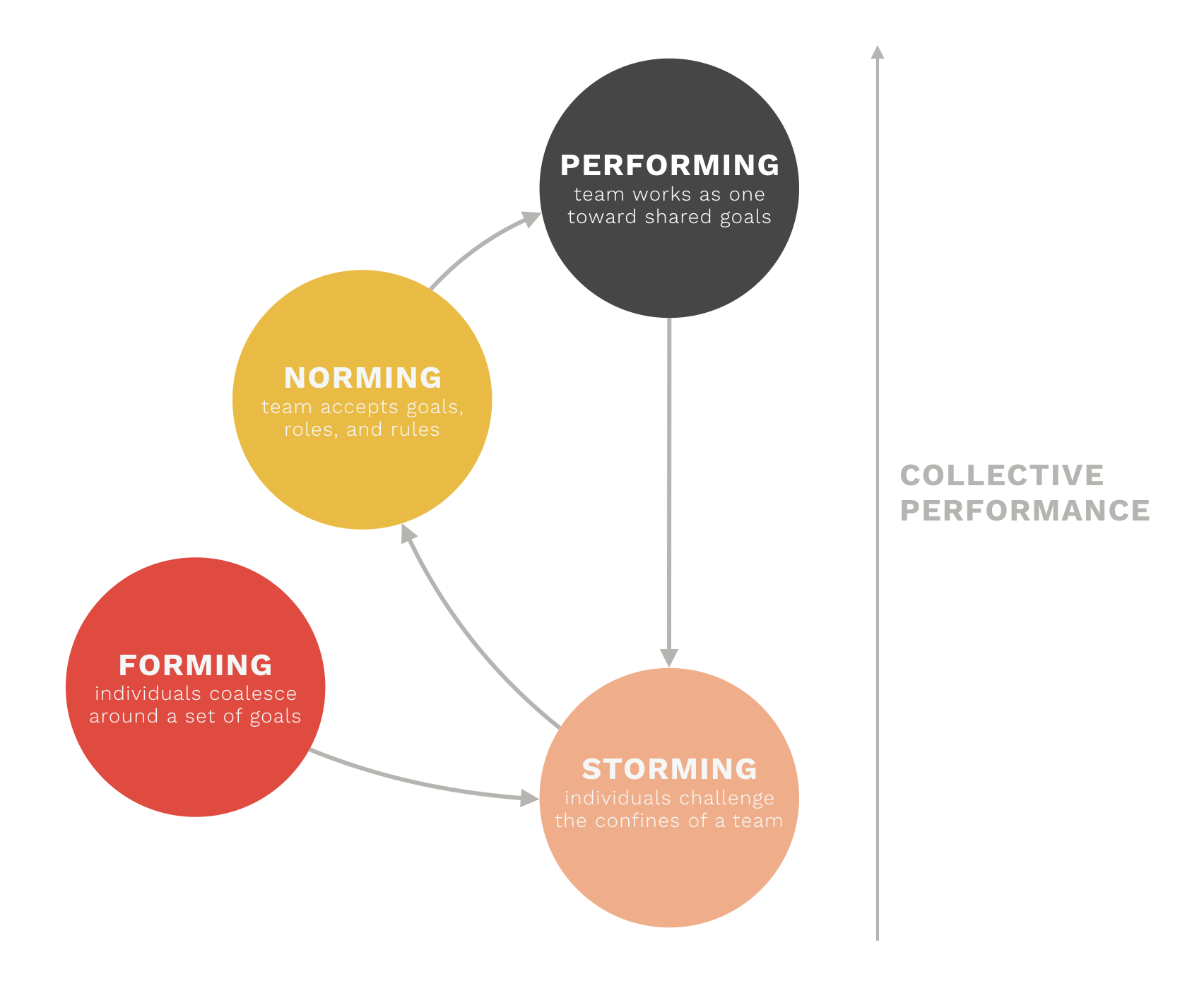This might seem like a bad thing: surely, the work we do should increase team cohesion? But the truth is, this dip is actually a sign that progress is being made. As psychologist Bruce Tuckman noted, every team goes through four stages: forming, storming, norming, and performing. Often, the teams we work with have already entered the norming, or even performing stage. Unfortunately, they’ve established unproductive norms: they don’t know how to disagree openly, for instance, or they’re stuck in silos. To become a high-performing team, they have to take a step back to storming, and learn healthier behaviors.

Not everyone is going to be happy with these changes. Some leaders may have established considerable power and influence under the old regime, and are afraid of giving it up. Others may simply not like change because it’s unfamiliar. Sometimes people need to leave, for the benefit of themselves and the organization. However, during change you can also lose your best people. As a leader, how do you keep the folks you need for the future, while not holding too tightly onto those who just won’t find it a fit for them? We always have clients consider the following:
-
What are the values and behaviors I want my team to adopt? Think about the ideal state, and compare it with how your team currently behaves. What’s blocking your team from correcting its performance?
-
Who are my stars? In advance of any change initiative, identify the people who you absolutely want to keep around, who you believe are the future of the organization. Check in with them on a regular basis to make sure that they’re onboard with the changes. If they’re struggling or unhappy with the way things are moving, it may be helpful to adjust. And while you should do your best to hold onto them, you should also be honest about the fact that their roles may have to change.
-
Who can I afford to lose? If some people aren’t onboard with the changes, for whatever reason, it may be best for both parties if they move on. But while they’re still with the team, be careful about how you respond to their feedback. They may often be the most vocal complainers, but that doesn’t mean that you should take it to heart. Instead, look at the big picture and see if their feedback aligns or disrupts where you ultimately want the team to end up.
Once clients know what to expect, we begin establishing the right new norms. We get the team involved in designing and testing new ways of working, so that they feel in control of the changes. We train managers in how to help their teams cope with the feelings of loss that change brings, and share tools to increase collaboration and productivity. As a result, by the end of our engagement, teams truly are performing, and trust and engagement scores have increased by double digits.








The Evolutionary Edge
Every Link Ever from Our Newsletter
Why Self-Organizing is So Hard
Welcome to the Era of the Empowered Employee
The Power of “What If?” and “Why Not?”
An Adaptive Approach to the Strategic Planning Process
Why Culture/Market Fit Is More Important than Product/Market Fit
Group Decision Making Model: How to Make Better Decisions as a Team